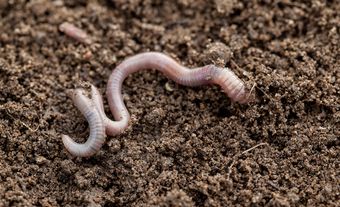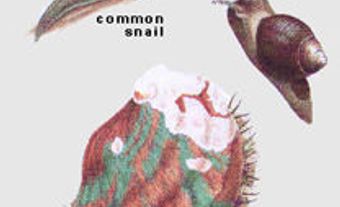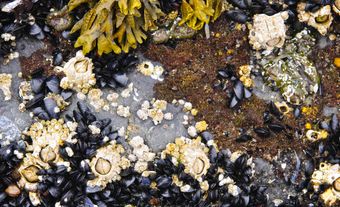
Ice-Worm is a common name for Mesenchytraeus solifugus, a dark-pigmented oligochaete worm (see Annelida) up to 4 cm long, found in tangled masses in the melting ice of glaciers in the Pacific Northwest; similar ice-worms are also reported in Greenland and Russia. The specific name solifugus aptly means "flees the sun": in spring and summer the worms feed on algae at the surface of the ice only at twilight, since they are vulnerable to temperatures above 7°C. Curiously they are not freezing-resistant, although they can tolerate supercooling down to -7°C. In winter the overlayer of snow insulates the worms from the lethal effects of freezing, and they can select optimum temperature zones by vertical migration.
The woolly ice-worm Gynaephora groenlandica (order Lepidoptera) of the High Arctic is a caterpillar that is tolerant of freezing and that overwinters in exposed conditions. The term "ice-worm" is also applied to the primitive insect Grylloblatta campodeiformis (order Notoptera), a slender, wingless animal, creamy-white in colour, sometimes found at edges of melting glaciers in the Canadian Rockies. Captain Robert F. Scott of the British Antarctic Expedition (1910-12) referred to ice-worms on the underside of spring pack ice, but these were filamentous diatoms (see Algae).
Ice-worms are part of Canadian folklore. An Inuit myth refers to Sikusi, "a woolly and mischievous ice-worm" and a notorious melter of igloos, which freed an Inuit from Tuktoyaktuk who was frozen in ice. Robert Service wrote the "Ballad of the Ice-worm Cocktail," the subject of which was a piece of dyed spaghetti with painted eyes.

 Share on Facebook
Share on Facebook Share on X
Share on X Share by Email
Share by Email Share on Google Classroom
Share on Google Classroom



